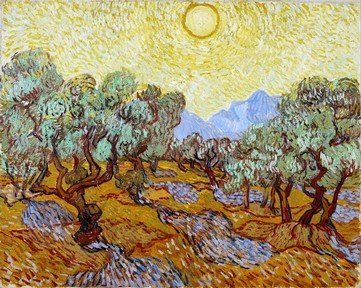Quiz Answer Key and Fun Facts
1. On June 10th, 2000, a new bridge crossing the Thames opened in London. The first two days many pedestrians crossing the bridge felt a swaying effect, which earned this pedestrian bridge the nickname "The Wobbly Bridge". On June 12th, 2000, the bridge closed for two years in order to find a solution for this feeling of instability. In 2002 the bridge reopened and the "wobbly" effect has not been noticed any more. Architects of this bridge are Foster and Partners, Arup and Sir Anthony Caro. What is the official name of this bridge?
2. Between 1641 and 1646, Pietro da Cortona painted the fresco "The Golden Age" on one of the ceilings of a Florentine museum. Which museum shows us this fresco (and several other ceiling frescoes) by Pietro da Cortona?
3. Three brothers illustrated the chronicle "Les très riches heures du Duc de Berry" between 1413 and 1416. What is the family name of these brothers?
4. An Italian mannerist completed in 1573 a series of paintings about the four seasons. Let's discuss here his work "Autumn". If you see this painting from a long distance, you would see the head of a man aged about fifty or sixty years (so, quite old for the era in which the painting was made). But looking closer, you find that the composition is made out of typical autumnal vegetation. Who was this Italian painter?
5. Pieter Brueghel the Elder completed a painting in which many people are trying to eat and drink as much as they can, for a rather modest period will follow. What is the title of this merry painting?
6. In the Palazzo Schifanoia in Ferrara, Italy, we can find a fresco "Allegory of April" painted by Francesco del Cossa. It shows us the triumphal entry of a Roman goddess traditionally associated with a feast celebrated on April 1st. This feast celebrates her protection against vice (although many temples dedicated to this goddess propagated prostitution - the moral standard has changed quite a lot). Who is this Roman goddess?
7. Ilya Repin painted a picture entitled "17 October 1905". What happened on this day?
8. El Greco spent four years on making a painting which depicts a dove hovering over a group of people. It is hard to tell how many people are present, but I've tried and counted twelve men and a woman. Above ten of these people appears a white flame. Which Catholic holiday gave its name to this painting?
9. The American Robert Capa made a famous series of photographs entitled "D-Day Landings". On which landing zone did he make 106 photos (of which only 11 were conserved)?
10. Canaletto painted in 1730 a scene entitled "The Bucintoro Returning to the Molo on Ascension Day". Ascension Day is the fortieth day after Easter Sunday, on which Catholics celebrate the Ascension of Jesus into Heaven. For those of you who don't know the Molo: it is a building near San Marco, Venice. But what kind of passenger transportation is the "Bucintoro"?
11. Edward Hopper's best known painting represents some people ordering something to eat in a restaurant open 24 hours a day. What is the title of this painting of 1942?
12. "Une dimanche après-midi à l'île de la grande Jatte" ("Sunday Afternoon on the Island of La Grande Jatte") is the masterpiece of a French pointillist painter. What is his name?
13. Michelangelo sculpted "Twilight" (and three other personifications of time) for two specific tombs situated in Florence, Italy. What is the family name of the persons who would be buried in these tombs?
14. Claude Monet made in 1872 a painting entitled "Impression: ..." (I've replaced the second part of the title by three dots, because that is exactly what I'll ask). The first part of the title of this painting originated the name for Impressionism. But what is the specific moment described in the second part of the painting's title? You may answer with two words in French or with one single English word.
15. In 1944, a Spanish painter completed "Dream Caused by the Flight of a Bee around a Pomegranate a Second before Awakening". This painting represents a female nude asleep on a floating rock. Out of a large pomegranate comes a fish, which ejects two tigers. The second tiger drops a bayonet towards the nude woman. A typical elephant on thin long legs is present in the background of this picture. Who painted this surrealist scene?
Source: Author
JanIQ
This quiz was reviewed by FunTrivia editor
agony before going online.
Any errors found in FunTrivia content are routinely corrected through our feedback system.
